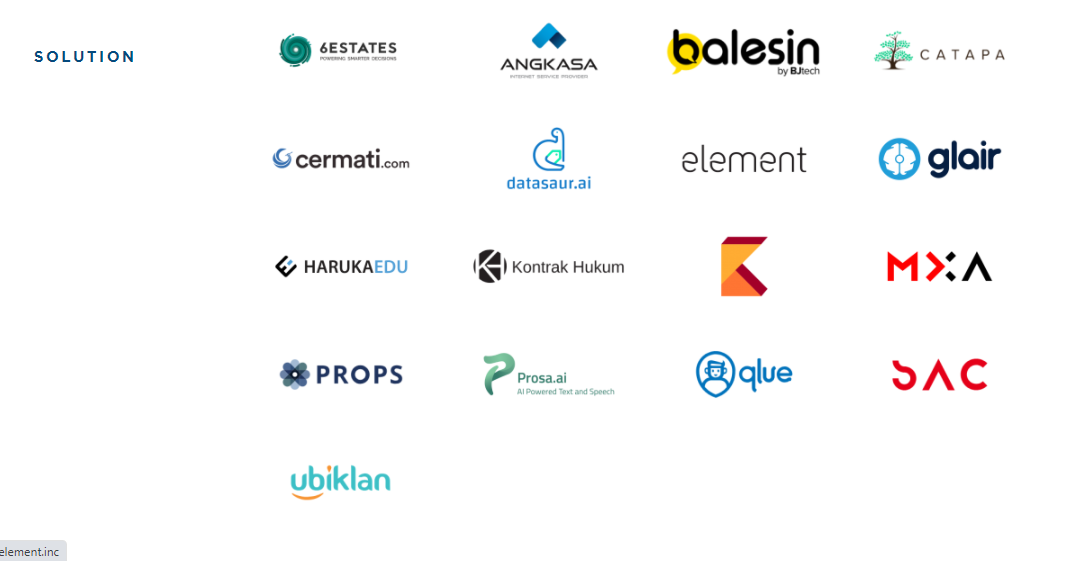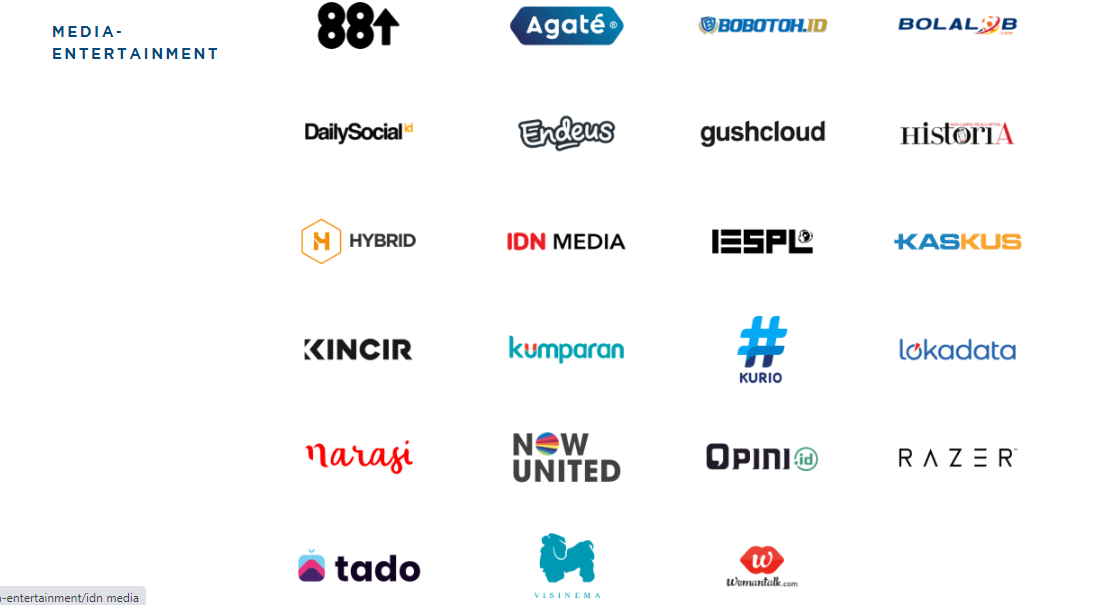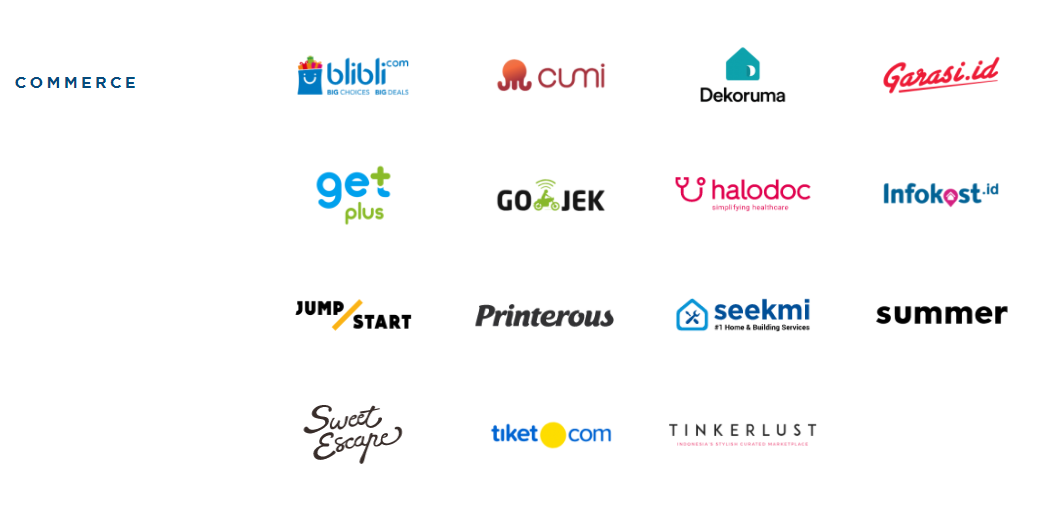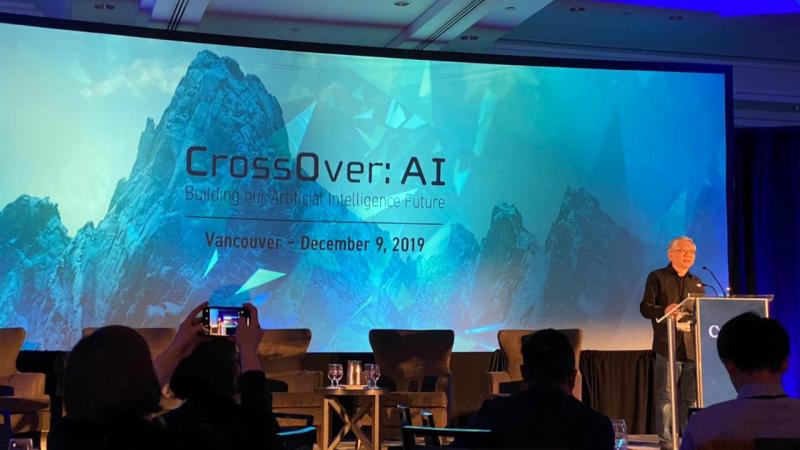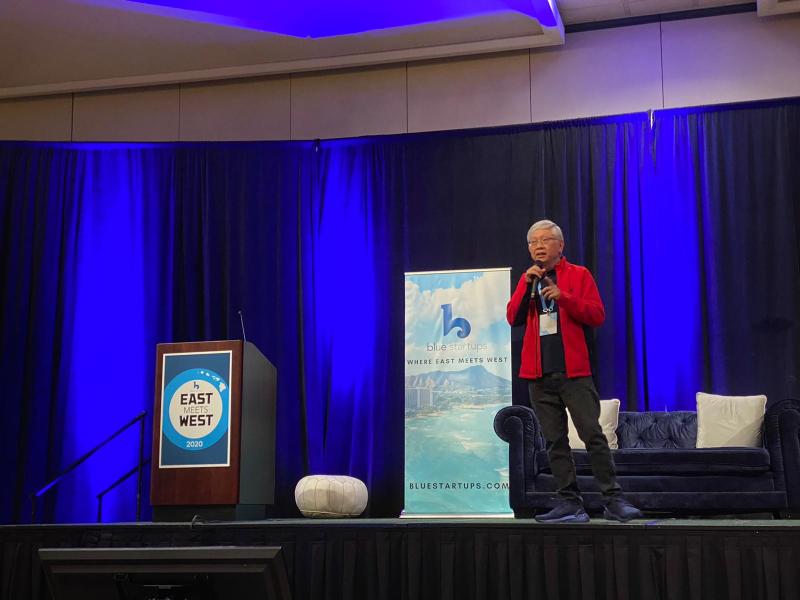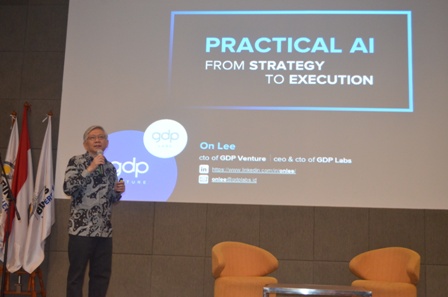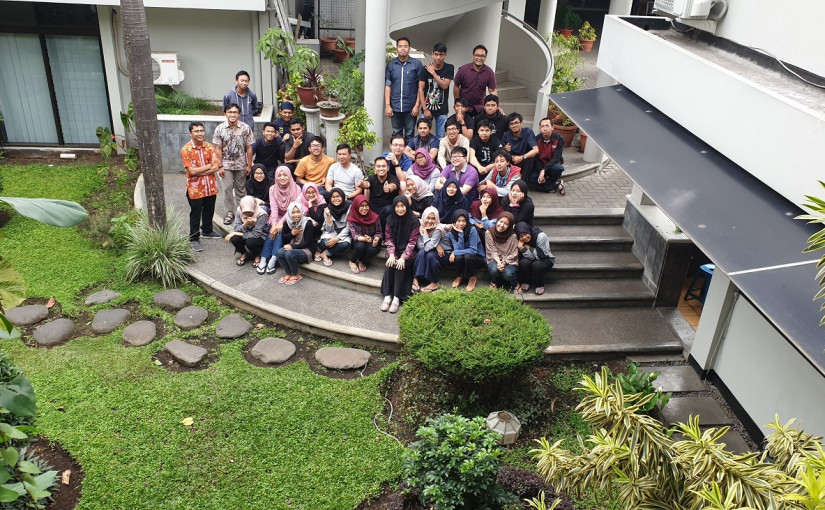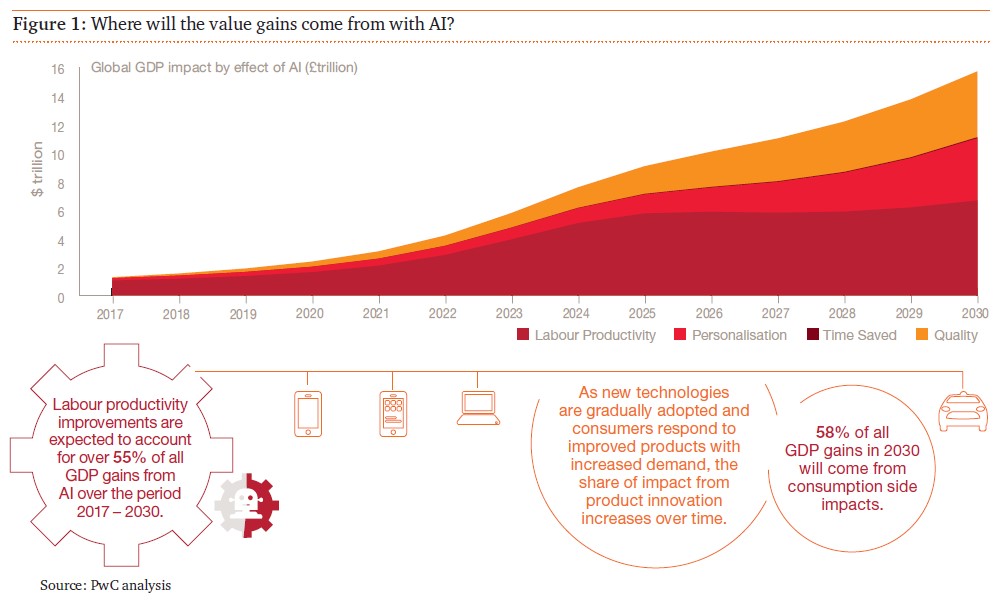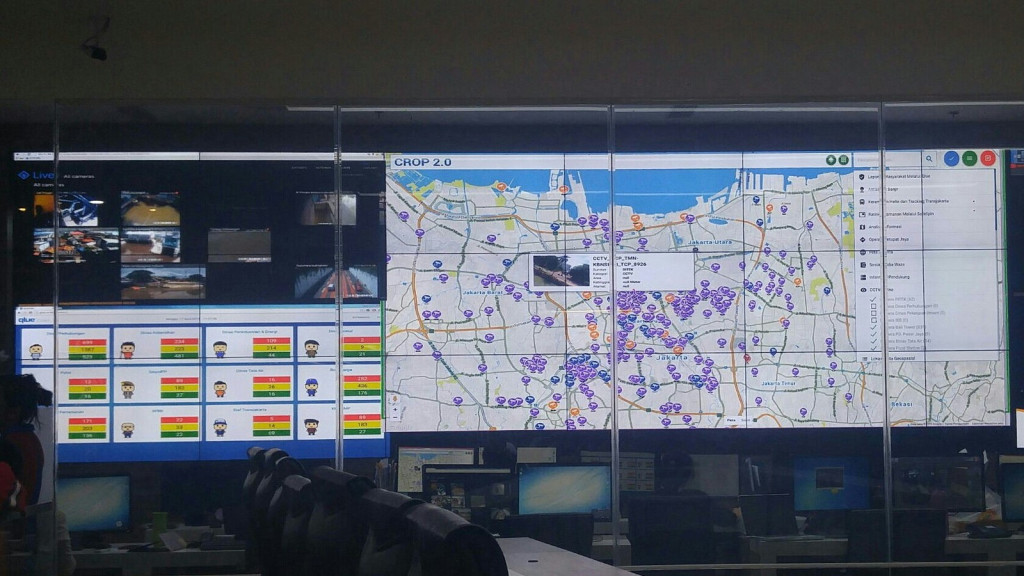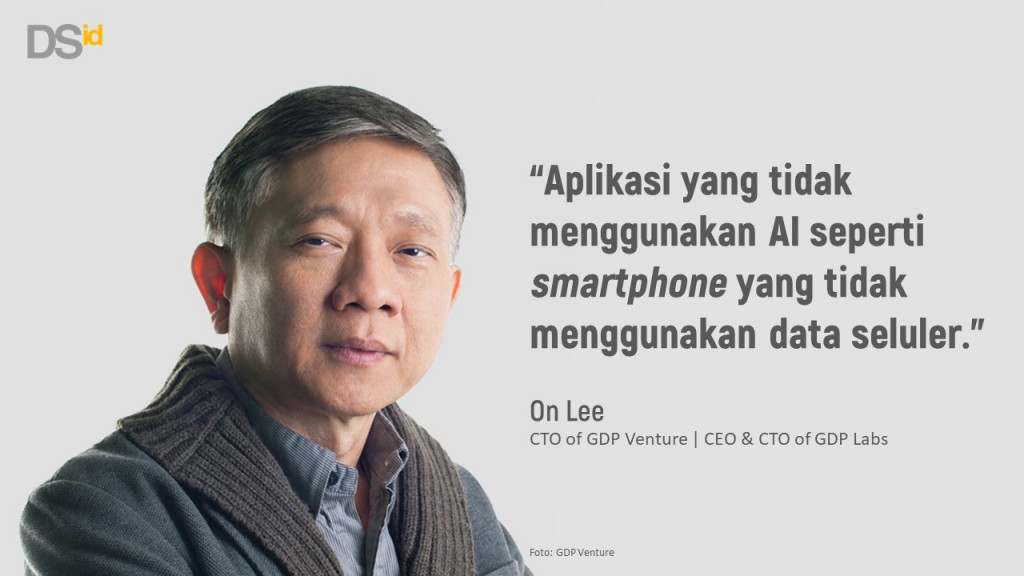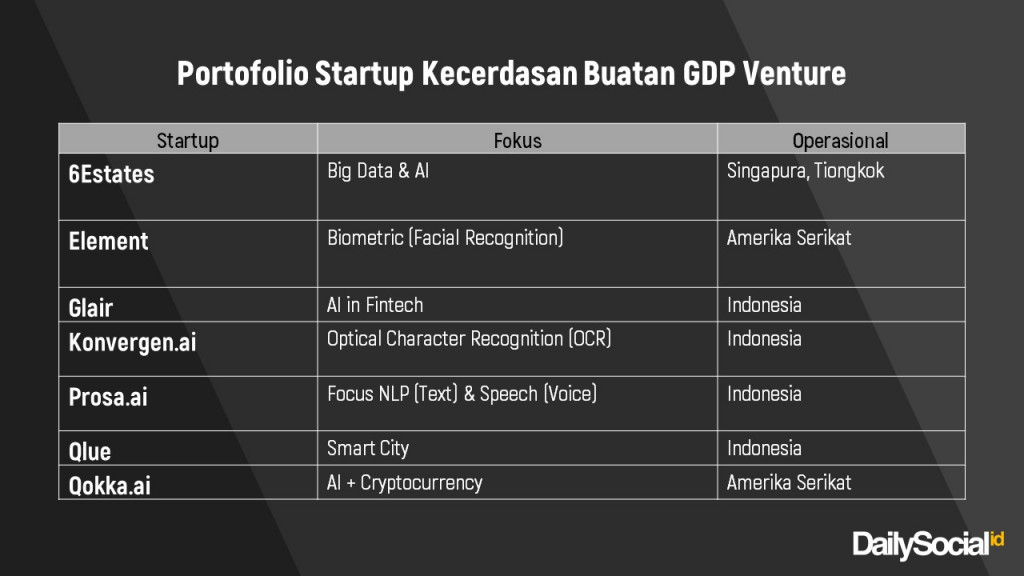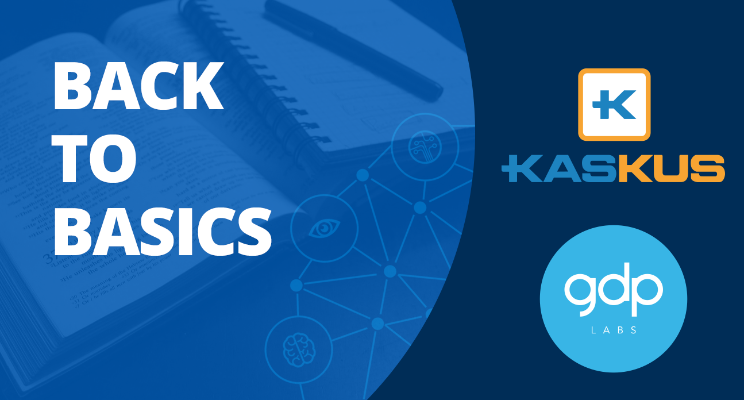Artikel ini adalah bagian dari Seri Mastermind DailySocial yang menampilkan para inovator dan pemimpin di industri teknologi Indonesia untuk berbagi cerita dan sudut pandang.
Menghabiskan hampir lebih dari tiga puluh tahun di negeri orang, CEO & CTO GDP Labs juga sebagai CTO GDP Venture, On Lee akhirnya kembali ke Indonesia pada tahun 2011. Dalam kurun waktu 10 tahun, ia berhasil mengembangkan GDP Venture dan membangun GDP Labs dari awal berbekal pengalaman matang hasil merantau. Selain itu, ia sebelumnya menjabat sebagai CEO & CTO Kaskus, forum komunitas online Indonesia terbesar di Indonesia.
Dengan lebih dari 30 tahun pengalaman dalam dunia internet, seluler, AI, Blockchain, Semantic Web, Knowledge Graph, pengembangan perangkat lunak konsumen dan perusahaan, ia telah memegang berbagai posisi manajemen dan teknis sebagai salah satu pendiri, CEO, CTO, Wakil Presiden Eksekutif Teknik, dan teknisi di perusahaan startup dan Fortune 500 di AS.
On Lee sangat tertarik dengan inovasi Artificial Intelligence. Beliau sempat mengampu jurusan teknik elektro sebelum akhirnya beralih jurusan ke ilmu komputer. Keyakinannya pada industri teknologi Indonesia dan teknisi lokal telah memberinya inspirasi untuk mendirikan GDP Labs. Dari tahun 2012 hingga saat ini, GDP Labs telah mempekerjakan 160 orang [kebanyakan insinyur] di lima kota di Indonesia, Jakarta, Bandung, Bali, Yogyakarta, dan Surabaya.
Melalui GDP Venture, sebagai venture builder, dengan fokus pada komunitas digital, media, perdagangan, dan perusahaan solusi di industri internet konsumen Indonesia. Mereka telah berinvestasi di lebih dari 50 portofolio dan masih terus bertambah. Selain itu, ia telah membangun tim untuk memulai produk baru yang strategis di perusahaan rintisan dan perusahaan besar di AS, Indonesia, Cina, dan India.
DailySocial berhasil mendapat waktu beliau untuk berbagi cerita penuh wawasan sepanjang perjalanan entrepreneurship-nya.
Sebagai CTO GDP Ventures, juga CEO & CTO GDP Labs, menurut Anda apakah industri teknologi Indonesia berpotensi untuk membangun pusat global untuk teknologi tinggi dan inovasi atau menjadi sebuah hub?
Pastinya. Teknologi digital dan AI mewakili peluang emas bagi Indonesia, dengan populasi yang relatif muda dan bersemangat lebih dari 260 juta orang. Negara ini menawarkan usia rata-rata produktif 30 tahun dan tingkat literasi 95 persen. Ekosistem start-up digital Indonesia sudah prima dan siap mengikuti jejak negara-negara Asia lainnya seperti Jepang, India, Taiwan, Korea, dan China yang telah berhasil mentransformasi negaranya melalui teknologi. Mereka telah secara signifikan meningkatkan keterampilan individu, standar hidup, dan produktivitas serta telah diakui sebagai pemain global utama di dunia. Pemerintah Indonesia memiliki banyak inisiatif teknologi; kebanyakan universitas menawarkan kelas ilmu komputer; dan investor lokal dan asing berinvestasi besar-besaran dalam ekonomi digital, dan semua hal ini meningkat selama pandemi.
Setelah sekian lama merantau, hampir tiga puluh tahun menggali ilmu di negeri Paman Sam. Apa yang mendorong Anda kembali ke Indonesia dan memulai GDP Labs? Apa yang menjadi mimpi Anda?
Saya kembali ke Indonesia karena alasan keluarga. Orang tua kami semakin tua, dan kami perlu merawat mereka.
Saya kemudian menemukan banyak talenta teknisi perangkat lunak yang hebat tetapi masih mentah di Indonesia. Banyak dari mereka tidak memiliki kesempatan untuk menerima pelatihan yang tepat, bimbingan, dll. Pak Martin Hartono, CEO di GDP Venture, dan saya membina beberapa pemimpin muda yang paling cemerlang dan paling menjanjikan yang akan menjadi ahli teknologi dan berpengetahuan luas dalam bisnis dan kepemimpinan di GDP Labs. Upaya kami menunjukkan hasil awal yang menjanjikan.
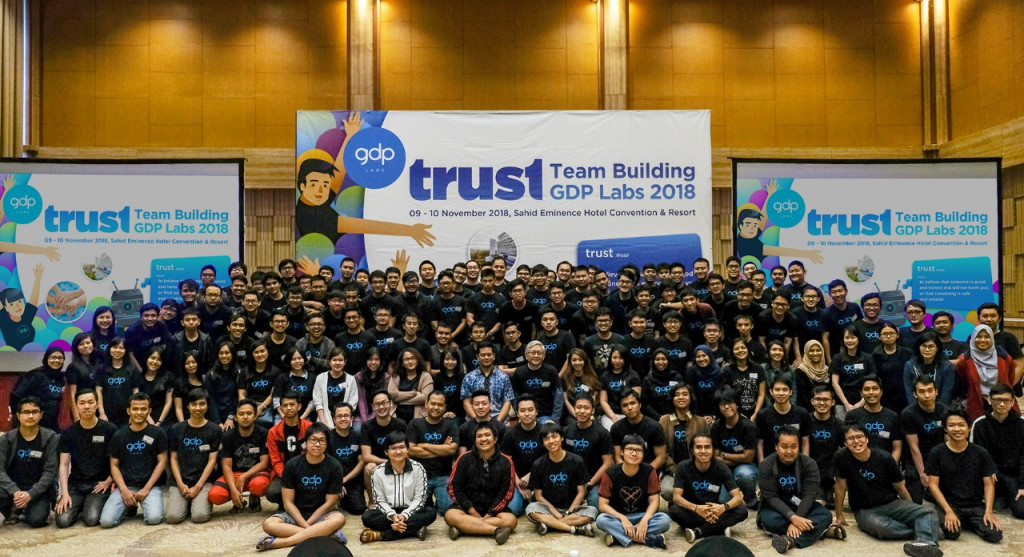
Kapan pertama kali Anda mengecap industri teknologi? Apakah hal ini memang menjadi passion Anda?
Awalnya saya mengambil jurusan teknik elektro, sebelum kemudian beralih ke jurusan ilmu komputer dengan minor dalam matematika.
Salah satu hobi saya adalah bermain catur. Dulu saya sempat menjadi pemain catur profesional. Saya tertarik pada ilmu komputer, matematika, dan catur karena keduanya memiliki dua kesamaan: logika dan pemecahan masalah. Hal ini membantu meningkatkan hidup saya secara pribadi dan profesional.

Saya sempat membaca beberapa artikel Anda terkait Artificial Intelligence (AI). Apa yang menjadi alasan Anda percaya bahwa teknologi dapat menjadi solusi bagi seluruh masalah di dunia?
McKinsey memprediksi AI memiliki potensi untuk menambah aktivitas ekonomi global sekitar USD13 triliun pada tahun 2030. Betul sekali, besarnya USD13 triliun. Beberapa ahli mengatakan bahwa AI sama pentingnya dengan penemuan api dan listrik. Meskipun itu mungkin tampak berlebihan, intinya adalah bahwa AI akan menjadi salah satu teknologi terpenting yang pernah ditemukan manusia, meninggalkan dampak pada masyarakat dan bisnis dengan cara yang sangat mendalam. Kemungkinan besar akan memiliki kelasnya sendiri. Hal ini akan menjadi bagian dari kehidupan pribadi kita, di hampir semua industri. AI akan membantu mempercepat pemulihan dan pertumbuhan ekonomi global serta memposisikan Indonesia dengan baik untuk masa depan dunia baru di hadapan kita.
2020 bukanlah situasi yang ideal bagi semua orang, namun apakah Anda yakin bahwa industri teknologi tanah air berperan penting dalam pemulihan kondisi negara ini?
Tahun 2020 menjadi sulit bagi semua orang karena pandemi yang menyebabkan kebangkrutan, pengangguran, dan masalah sosial. Selain mengurangi biaya, meningkatkan produktivitas dan kenyamanan, teknologi akan membantu kita menjadi lebih aman dan sehat. Hal ini akan turut membantu mempercepat pemulihan ekonomi.
Bagaimana dengan GDP Venture dan GDP Labs sendiri? Apakah situasi ini mempengaruhi kinerja perusahaan secara signifikan?
Tentunya, tidak ada yang kebal. Kami telah meminta perusahaan kami untuk merevisi rencana tahun 2020 mereka tentang bagaimana bertahan dalam jangka pendek dan berkembang dalam jangka panjang. Pandemi ini bisa diibaratkan seperti kaca pembesar dan akselerator. Ia menyoroti apa yang telah Anda lakukan dengan benar tetapi juga apa yang telah Anda lakukan salah. Kami telah memilih untuk mempercepat beberapa inisiatif. Singkatnya, kami mencoba beradaptasi.
Dalam hal investasi, apakah menurut Anda Indonesia sudah memiliki iklim yang bagus untuk industri teknologinya? Apakah Anda melihat perubahan pada lanskap investasi sebelum dan sesudah pandemi?
Iya. Kami mendapat dukungan pemerintah yang cukup baik. Universitas menghasilkan banyak teknisi perangkat lunak setiap tahunnya, dan terdapat hampir 200 juta pengguna Internet di Indonesia, pengusaha, investor lokal dan asing.
Pandemi adalah salah satu bentuk peringatan yang baik. Startup fokus pada apa yang paling penting untuk bertahan dan berkembang, penilaian dan ekspektasi perusahaan menjadi lebih realistis. Ini adalah pengalaman yang mengajarkan banyak hal.
Beberapa portofolio GDP
Sebagai serial entrepreneur dengan pengalaman lebih dari 30 tahun dalam dunia teknologi, Anda pasti pernah ditempatkan dalam situasi yang sulit sebelumnya. Apakah Anda berkenan berbagi kisah jatuh bangun membangun perusahaan? Serta bagaimana Anda berhasil melewati masa-masa sulit itu?
Benar. Waktu dan keberuntungan memainkan peran besar dalam keberhasilan atau kegagalan perusahaan mapan dan startup. Salah satu perusahaan rintisan tempat saya bekerja berada di jalur yang tepat untuk mencapai valuasi miliaran dolar di Silicon Valley. Sayangnya, resesi 2008 melanda AS serta perkara hutang teknis. Perusahaan itu dijual dengan harga lebih rendah dari ekspektasi kami meskipun kami masih mendapat untung.
Apakah Anda memiliki sosok panutan (mentor) untuk melewati masa-masa sulit? Mungkin semacam support system.
Pastinya. Saya beruntung mendapat bantuan dari banyak orang – teman, keluarga, pembimbing, rekan kerja, guru, dan bahkan orang asing.
Setiap orang akan memiliki titik terendah dalam hidup mereka. Mereka membutuhkan support system untuk melewati kesulitan. Saya belum melihat ada orang yang berhasil melakukannya sendiri.
Siapa yang menginspirasi Anda hingga seperti saat ini? Apakah Anda masih punya mimpi yang belum tercapai?
Banyak orang – ahli teknologi, ilmuwan, olahragawan, seniman – menginspirasi saya. Mereka memiliki karakteristik sebagai berikut: mereka terus-menerus belajar untuk dapat memiliki pengetahuan yang lebih luas dalam kepemimpinan, bisnis, dan pemimpin dalam domain masing-masing.
Saya percaya, adalah hal yang penting untuk membantu generasi muda karena banyak orang membantu dan memberi saya kesempatan ketika saya masih muda dan belum berpengalaman. Ada begitu banyak peluang untuk mendisrupsi banyak bidang dengan menggunakan teknologi, sementara beberapa perusahaan mapan masih menggunakan teknologi abad ke-20. Tetaplah sehat.
Apa yang ingin Anda sampaikan pada para tech enthusiast yang masih berjuang menapaki jalan menuju industri namun terhadang oleh pandemi?
Kejelasan. Kepercayaan. Keyakinan. Memiliki kejelasan tentang apa yang ingin Anda lakukan. Jalankan dengan kepercayaan dan keyakinan tanpa henti. Ada peluang tersembunyi selama pandemi.
Artificial Intelligence disebut akan menggantikan pekerjaan manusia. Sebagai seorang individu, pernahkah Anda memikirkan tentang skenario terburuk yang bisa diakibatkan oleh teknologi ini?
AI akan menggantikan beberapa pekerjaan yang ada. Tapi, itu juga akan menciptakan jenis pekerjaan baru; lebih dari itu menghilangkan. Mari kita lihat dua skenario berikut.
Pertama, industri mobil menggantikan industri kuda. Ada lebih dari 1,4 miliar mobil dan hanya ada 58 juta kuda di dunia sekarang. Industri mobil – produksi, layanan, mobilitas yang baru ditemukan, dll. – telah menciptakan lebih banyak pekerjaan daripada yang dihilangkan dari industri kuda.
Kedua, ada perusahaan yang mengimplementasikan robot bertenaga AI di gudang mereka. Banyak karyawan yang khawatir akan kehilangan pekerjaan. Ternyata perusahaan mempekerjakan lebih banyak orang karena robot. Ini mungkin tampak kontra-intuitif. Mengapa? Karena robot efisien dan bekerja 24 jam sehari sehingga menghasilkan lebih banyak; manusia menjadi penghambat dan lebih banyak manusia perlu disewa untuk mengimbangi robot. Meskipun robot dapat melakukan tugas tertentu, mereka tidak dapat melakukan segala hal.
Manusia akan bebas melakukan pekerjaan yang lebih kreatif, sementara teknologi dan AI menangani pekerjaan mekanis. Selain itu, teknologi dan AI membebaskan sebagian waktu umat manusia sehingga kita dapat menghabiskan waktu kita dengan orang lain.
Singkatnya, AI meningkatkan kreativitas manusia dan pada akhirnya menjadikan kita lebih manusiawi.
–
Artikel asli dalam bahasa Inggris, diterjemahkan oleh Kristin Siagian

